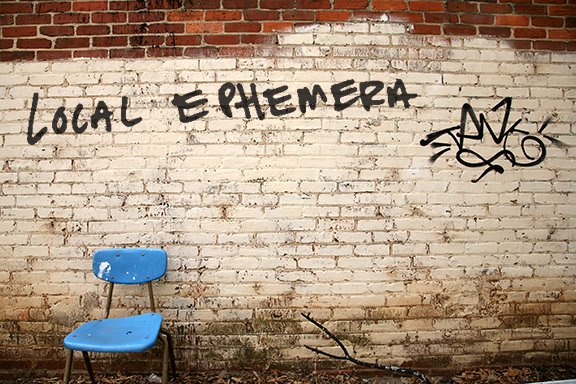
Solomon Projects managed to deliver yet another incredibly difficult-to-photo-document show. What's that you ask? A microscopic view of red blood cells? No. Acid-free adhesive red dots? Yes.
 "All Things Considered (March 2007)" 2007-2008
"All Things Considered (March 2007)" 2007-2008Why it's the United States of America in little dots to herald the passing of town, city, state, country, mountain, lake, and ocean names over the lips of Steve, Renee, and Mee-chele.

It's the new work of Kathryn Refi entitled "All Things Considered" in which Refi listened to the Public Radio broadcast everyday in 2007, marking with red dots the location of places mentioned in the first hour of the news show. Refi's data is broken down by month, with each of the twelve charts lining the gallery walls.
 "All Things Considered (March 2007) - 2007-2008
"All Things Considered (March 2007) - 2007-2008After having seen Refi's painting series "Color Recordings" in which she translates her daily observations into brilliant color fields of abstracted information, I was eager to see her latest technology-based translations of life into art. But I must admit I found myself a bit disappointed.
 "All Things Considered (June 2007) - 2007-2008
"All Things Considered (June 2007) - 2007-2008Where's South America? The moral of the story is as much what isn't marked as what is though it's not surprising that Washington DC and Iraq were both mentioned a LOT in 2007 while a good chunk of penguin populated Argentina was never mentioned once.
A critique of NPR? Of Western culture/interest? I doubt Refi was seeking to critique anything necessarily as her work tends to be run more like scientific experiments in which the data, always displayed in a beautifully minimal aesthetic, is provided for the viewer to draw their own conclusions.
 "All Things Considered (June 2007) - 2007-2008
"All Things Considered (June 2007) - 2007-2008New York New York, DC, stacked high.

Hot topics in June.
As my date shrugged off the show saying it seemed more like a sociology experiment than art, I found myself unable to argue much in Refi's defense. Is this art? Had a sociologist conducted this experiment the data would have no doubt been presented in a much less attractive way, but does the aesthetic of the visual information presented automatically qualify it as art?

For me, what elevates this work above a pie chart and what makes it truly interesting was Refi's decision to omit an outline of the continents. The result is that the less a country was mentioned on NPR, the more difficult it is to locate or identify on Refi's maps. It's as if each piece of paper represents the geographical awareness of Americans, areas of South America, Africa, and Asia reduced to isolated red dots or altogether disappearing.

More interesting for some was Steve Aishman's "Silly Putty Rorshach #5" (2008) which reminded me of Hannah Wilke's chewing gum poon at the Contemporary last October.

If that was All Things Considered then this must be Morning Edition. In another of Refi's studies called "African Violet Drawings" from 2001 Refi drew a house plant each day for a month as it grew and shriveled. This is another series that needs to be seen its entirety of 28 drawings to grasp the fascinations of the artist which makes me think these may have been more successful had they been done on a much smaller scale so that the entire series could be framed as one piece.

Show up at Solomon Projects through October 11th 2008. Go see it! My pictures are almost completely useless.
Related Post:

2 comments:
I think there is a whole area of conceptual art to which these pieces relate...and they're quite lovely considered as dot pieces with zero knowledge of geography or context. Of course, they work more for map freaks, as I wrote on my counterforces.blogspot.com journal. some of us get excited about figuring out why Asia seems to lean much further into the Pacific than we thought it did (at least before we started studying the map to see where Sarah Palin could see Russia from if she leaned out way far from the window).
littlejoke-
Thats a good point, and more true than anything Palin has claimed thus far...
In thinking more about the show, I find the individual pieces interesting but I am not sure there was enough change in information to warrant 12 consecutive works. What if one had been done for each of 12 years instead? A change in dot density would have been more noticable. Having said this, I don't think I have much room to talk as I did not study each and every one very closely.
Post a Comment